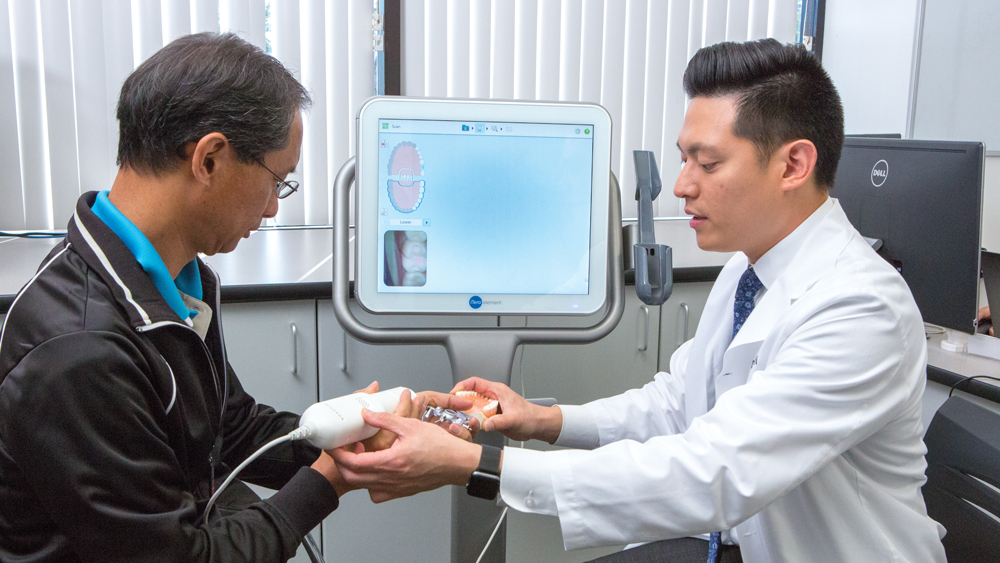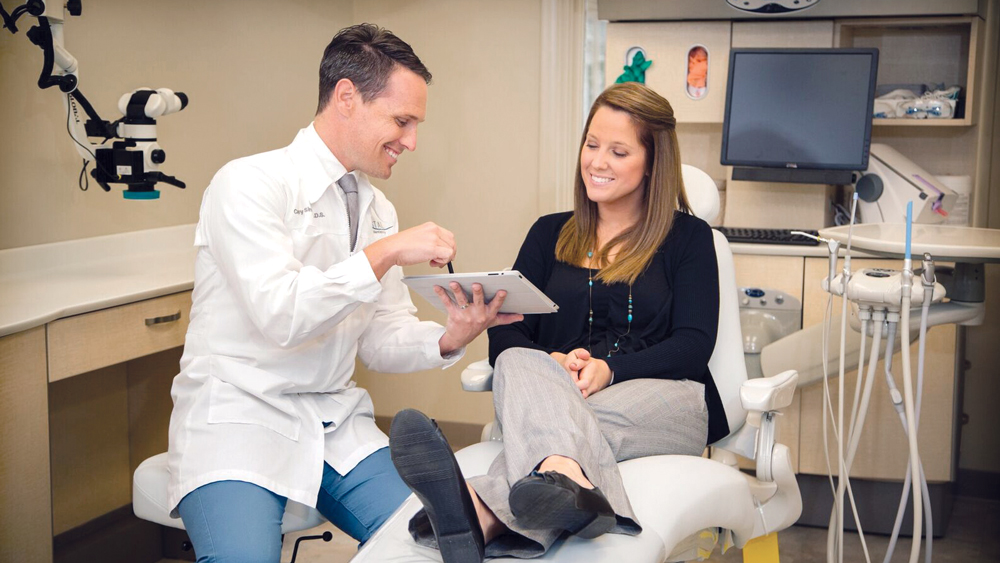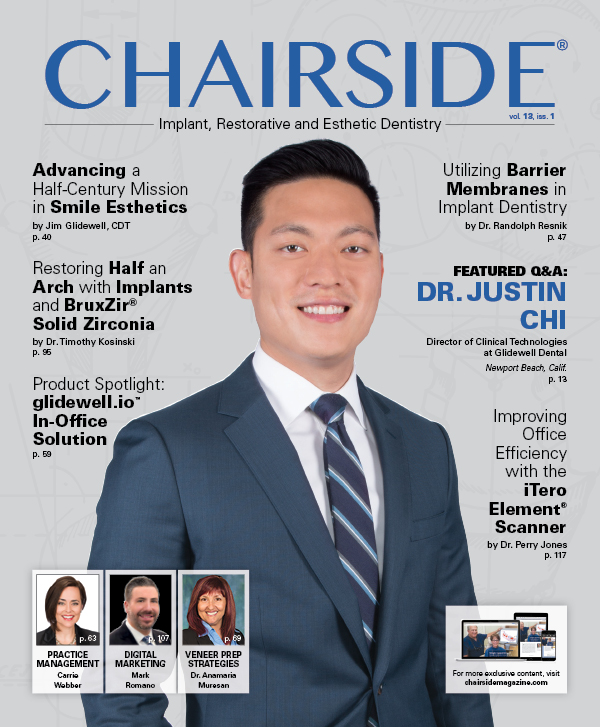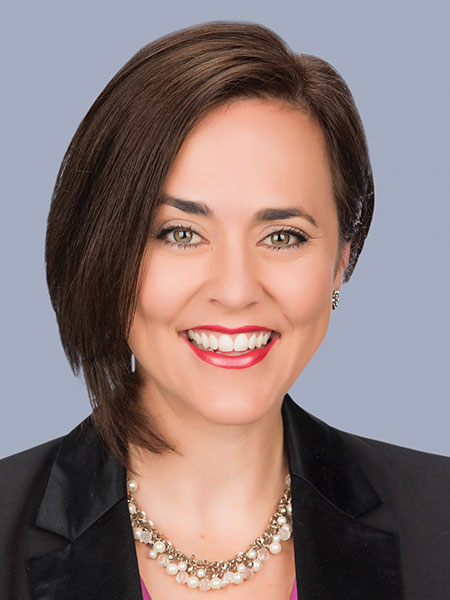Making Technology a Principal Player in Your Practice
Adding the right technology to your practice is critical to your ability to continue to grow and to create an attractive presence in the community. How do you determine what technology should be joining your team in the years to come — and, even more importantly, how will you optimize its utilization in your practice?
The successful integration of technology will be determined by the openness and adaptability of your team. The teams that successfully adopt technology into their workflows throughout a practice’s lifetime will join the top tier of dental businesses in the coming years.
According to a study by Futuredontics, the parent company of 1-800-DENTIST, the top technologies patients are asking for are CAD/CAM and digital imaging.1 Are you the answer to these requests? If you fail to keep up with the tides of technological advancement, you lose the ability to leverage yourself as a chosen solution for today’s generation of patients — and the next.
If you fail to keep up with the tides of technological advancement, you lose the ability to leverage yourself as a chosen solution for today’s generation of patients — and the next.
The World Economic Forum states that, because of technology’s extraordinary advancements, 65 percent of children entering schools today will likely work in careers that don’t currently exist.2 This is just a snapshot of the future of our society — technologically savvy to the point where we don’t even know what jobs await our children. If you are not moving with the forward progress of technology in your dental practice, it will be highly likely that, within the next five years, you will find it more and more difficult to attract patients — and even high-performing employees — to your practice.
As you determine what technologies to integrate into your practice, it is important to make those decisions with extensive thought and vision, as well as have an action plan to successfully integrate the tools so that they are actually used and not just taking up space. Remember these key areas as you take your first steps toward a large technological investment:
- Have a clear vision and set goals for the technology’s role and utilization in your practice.
- Prioritize and plan comprehensive and ongoing training for your team.
- Focus on effective communication — with both your team and your patients — about the technology.

Dr. Justin Chi provides intraoral scanner training, helping clinicians and their teams integrate new procedures into the dental practice.
VISION AND GOALS
Significant technological advancements are often called “disruptive technology” because they disrupt our day-to-day life or workflow as it has previously existed. Technologies such as CAD/CAM and digital imaging can disrupt practices that are not familiar with how to use the tools in their day-to-day work. However, this is not a negative thing — in fact, I believe that it is only through disruption that we can experience innovation. Leaders, it’s up to you to help your team see the purpose and vision for new tools, along with team members’ individual roles in the actualization of your vision.
How are you as a leader communicating the reason behind the purchase — the “why,” so to speak? How does this technology support the vision of the doctor and the practice? What is the end goal for the utilization and implementation of this tool into your business and your practicing life? These are important questions to answer and share with your team as you prepare together to make big shifts in your day-to-day operations.
Once the decision is made to incorporate this new technology, have a team meeting to communicate the purpose and vision of this new tool. Together, plan steps to make sure everyone has the processes, skills and support to incorporate the system as soon as possible. At Jameson, we believe that, through consistent and effective goal-setting and action-planning, you will move toward your vision of maximizing your investment. By identifying specific goals, assigning those responsible and determining deadlines for execution, you can progress as a team and accomplish more in a shorter period of time.
For example, let’s say you have a vision of providing same-appointment dentistry to your patients, thus the decision to invest in intraoral scanning and an in-office milling unit. Strategize goals as a team for ongoing training, with trainers and coaches as well as on your own as a team, and assign next steps and levels of competency expectation to each team member involved. One approach could be to set an attainable goal of working toward your desired competency with both the scanner and the mill, outsourcing larger cases to your laboratory while working to master your skills at fabricating single-unit crowns chairside. Not only does this help you and your team take on that “elephant” of skill and execution one bite at a time, but it also helps you see a path forward and pursue that path at a comfortable pace for all of your team while also putting your new technology to work as you learn.
It is our recommendation that your entire clinical team be trained and become proficient in the technology. We want doctors to spend their time doing the work only they can do, and we want to delegate the rest when and where it is acceptable, depending upon your state’s regulations.
Clear vision and a defined plan of action can help you launch this new service successfully. They are greatly beneficial as you incorporate any form of change into your business.
TRAINING
What we often see happening with technology of this nature is that the investment is made, the equipment arrives, the initial training takes place, and months later you find the unit in the corner, collecting dust. A pretty pricey decoration for the practice, don’t you think? Typically, the practice hasn’t invested enough time to ensure that all elements of the practice and all members of the team are prepared and ready to utilize and maximize this new tool — from the actual use of the technology, to how to talk about the new technology to the patients, to how to properly schedule for its use.

After adding new digital technologies to his practice, Dr. Chad Duplantis ensured that both he and his team underwent training to achieve proficiency.
It takes a marriage of clinical and management skills to smoothly and successfully integrate this technology into your practice.
As Dr. John Jameson always says, if you are going to make the significant investment of adding new technology to your practice, please invest in the training for your team. Otherwise, the technology will never work. Block out the time to have hands-on training, learn how to schedule appropriately for the procedures, and practice excellent communication skills on how to market the technology and talk about it to your patients. With new technology comes many uncertainties for your team — how to use it just being the first. Take the necessary time and make sure to measure your results, track your progress and determine on a regular basis, especially early on, subsequent steps to reach the next level of competency with the tools.
If you are going to make the significant investment of adding new technology to your practice, please invest in the training for your team.
Intentional, scheduled training and “check-in” time to see how you and your team are adapting to the new technology will make a huge difference. This technology is designed to help you become more productive, profitable and efficient — think of all the potential ways it can advance your care and skill. For example, if you find it is taking more time for your clinical assistants to take digital impressions with the scanner than previously with traditional impressions, this is a telltale sign of potential uncertainty with the tool and a need for development in technique. A lunch training session with a team member in the chair, practicing the capturing of images, working with the tool and allowing the more adept team members to help mentor others can prove effective. If you find that more in-depth training is needed, schedule it. It is always better for you and your practice to invest in becoming your best.

Successful case presentations are built on excellent communication skills — even more so when you’re introducing new technology. Here, Dr. Cappy Sinclair of Virginia Beach, Virginia, explains the proposed treatment and answers the patient’s questions using digital visual aids, better ensuring that the patient understands the full treatment scope and benefits.
COMMUNICATION
In order for you and your team to become truly successful in utilizing new and revolutionary technology that shifts you to a more progressive and digital workflow, you must create an environment where questions are welcome and conversations are safe. Your team’s sense of permission and safety to be able to troubleshoot with you and with coworkers through the “getting acquainted” phase of the technology can have a major impact on how quickly you move through levels of skill.
Communication among the team is imperative to the success of the team, but communication with the patient is imperative to the success of the practice. As you are the leader and a member of this team, your enthusiasm for, and the value you place in, this technology and the benefits it provides will be a contributing factor to how the patient values the treatment. By listening to your patient’s goals, wants and needs, actively addressing any questions or concerns, and giving your full time and attention to the conversation, you will help build a foundation on which an excellent case presentation can be built.
Communication among the team is imperative to the success of the team, but communication with the patient is imperative to the success of the practice.
Your utilization of excellent communication skills when introducing and providing education about this technology to your patient family is going to make all the difference for you, along with the speed at which you begin successfully maximizing it on a day-to-day basis. It is crucial for you to become fluent in your ability to explain it, answer questions about it, schedule it, and help patients see the benefits of it. Your confidence builds their confidence.
Another shift you will begin to see is how your schedule appears to you. Once you begin to see your same-appointment dentistry vision as a realization, the schedule will reflect this. Patients should not have to come in for as many appointments (and they will thank you for that), and your days may reflect more of what Jameson founder Cathy Jameson calls the “model of success”:
- See patients for fewer appointments.
- Do more dentistry per appointment, when and where appropriate.
Through the integration of today’s technology into your practice, you can accomplish all of this and more. It is up to you to lead your team to the optimal level of execution and skill. In doing so, you strengthen your place in the coming years as your next new patient’s practice of choice.
References
- ^Advanced Dental Technology: Perceptions vs. Reality [internet]. Los Angeles: Futuredontics; 2017 [cited 2018 Jan 26]. Available from: https://www.dds1800.com/TechReport/.
- ^Dunne N. How technology will change the future of work [internet]. Cologny, Switzerland: World Economic Forum; 2016 Feb 24 [cited 2018 Jan 26]. Available from: https://www.weforum.org/agenda/2016/02/the-future-of-work/.



